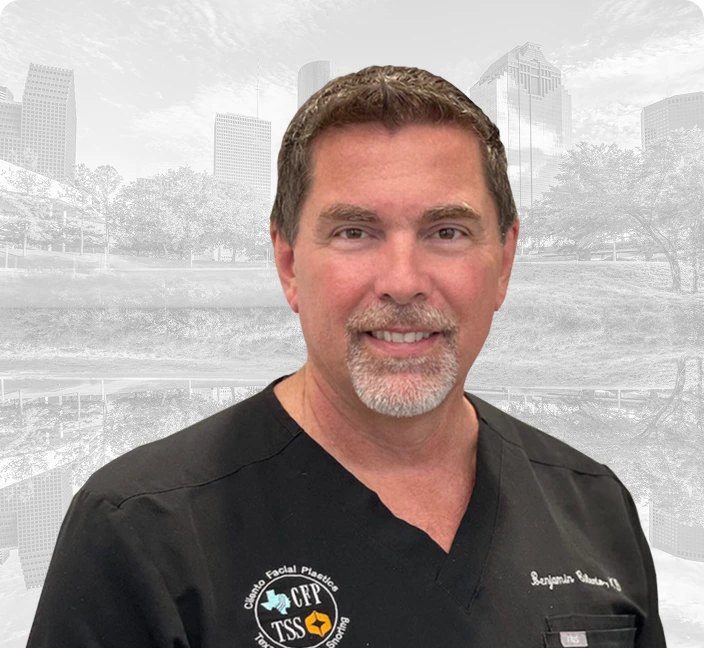Key Takeaways
- Choosing a skilled surgeon and understanding the surgery are crucial first steps.
- There are two main rhinoplasty techniques: open and closed, each with its own benefits.
- Proper aftercare is essential for a swift and smooth recovery.
- Recovery involves a week-by-week process with specific do’s and don’ts at each stage.
- Being aware of normal post-op symptoms versus complications can ensure timely interventions.
Embracing Your New Look: A Step-by-Step Rhinoplasty Guide
Deciding to undergo rhinoplasty is a significant step towards enhancing your facial harmony and boosting your self-confidence. It’s not just about the surgery; it’s about the journey—before, during, and after. Therefore, equipping yourself with the right knowledge and tips is the key to a successful transformation.
Understanding the Basics of Rhinoplasty
Rhinoplasty, commonly referred to as a nose job, is a surgical procedure that alters the shape or function of the nose. It’s not just a cosmetic change; for many, it’s a fresh start. Whether you’re correcting a deviated septum or reshaping the nose for aesthetic reasons, the goal is to achieve balance and proportion that’s in harmony with your other facial features.
Most importantly, the success of your rhinoplasty lies in the hands of the surgeon you choose. That’s why it’s critical to select a board-certified plastic surgeon with extensive experience in facial procedures. They should not only have a gallery of before-and-after photos for you to review but also a clear understanding of your vision and how to safely achieve it.

Choosing the Right Surgeon for You
When you’re ready to take the plunge, scheduling consultations with potential surgeons is your next move. During these meetings, discuss their qualifications, your expectations, and the realistic outcomes. Remember, this is your face, and you deserve the best. A good surgeon will make you feel heard, respected, and confident in their abilities.
Delving Into Rhinoplasty Techniques
Open Rhinoplasty Explained
Open rhinoplasty involves a small incision made across the columella—the strip of tissue separating the nostrils. This approach allows your surgeon to lift the skin off the tip of your nose, providing a full view of the nasal structures. Because of the increased visibility, it’s often used for more complex cases.
The Open Approach Benefits
- Provides greater access for intricate or substantial modifications.
- Improves accuracy in reshaping, which is crucial for symmetry and function.
- Fosters detailed work on nasal tip and middle vault of the nose.
When Open Rhinoplasty is Recommended
Open rhinoplasty is typically recommended when significant changes are needed, such as fixing severe deformities, performing extensive tip work, or when a previous surgery needs revision. It’s also the go-to for most primary rhinoplasties because it allows for precise sculpting and restructuring.
Closed Rhinoplasty: What You Need to Know
Closed rhinoplasty, on the other hand, involves incisions made within the nostrils, leaving no visible scars. It’s a less invasive approach, often chosen for patients requiring minor adjustments. The lack of a columellar incision results in less swelling and a faster recovery.

The Perks of Closed Technique
- No visible scarring, as all incisions are inside the nostrils.
- Typically shorter operation times and faster recovery.
- Less disruption of nasal tissue, leading to less post-operative swelling.
Scenarios Suited for Closed Rhinoplasty
Closed rhinoplasty is ideal for patients who need minor modifications to the nasal bridge or septum corrections. It’s also suitable for individuals who prefer a less invasive approach with a quicker return to their daily routine.
Whether you opt for an open or closed rhinoplasty, the technique chosen will depend on your unique nasal structure and the changes you wish to see. Your surgeon will guide you through the options and help you make an informed decision that aligns with your goals and ensures the best possible outcome.
Now, let’s talk recovery. Healing from rhinoplasty isn’t just about waiting; it’s about actively participating in your own recovery process. And that starts with knowing what to do—and what not to do—after you leave the operating room.
Recovery Journey: How to Heal with Ease
After your rhinoplasty, it’s time to focus on recovery. This period is as crucial as the surgery itself because proper healing is key to your new nose’s appearance and function. Let’s dive into the steps you can take to ensure a smooth and speedy recovery.
Post-Op Dos: The Road to Quick Recovery
Following your surgeon’s post-op instructions to the letter is the golden rule for a quick recovery. These directions are tailored to your specific surgery and are designed to minimize complications and speed up your healing process.
Immediate Aftercare: The First 48 Hours
The first two days after surgery are typically the most uncomfortable. It’s normal to experience some pain, swelling, and bruising. Here’s what you should do to help manage these symptoms: For more detailed information, check out this comprehensive Rhinoplasty Recovery Guide.
- Keep your head elevated, even while sleeping, to reduce swelling.
- Use cold compresses around, but not directly on, your nose to help with bruising and swelling.
- Take pain medication as prescribed by your surgeon.
Remember, these initial days are when your body kickstarts the healing process, so rest is essential.
The Role of Nutrition and Hydration
Eating well and staying hydrated are non-negotiables after rhinoplasty. Your body needs nutrients to repair itself. Opt for foods rich in vitamins and minerals, like fruits, vegetables, lean proteins, and whole grains. And don’t forget to drink plenty of water – it helps flush out toxins and reduce swelling.

Avoiding the No-Nos: What to Steer Clear of Post-Surgery
Just as there are things you should do after rhinoplasty, there are also things you should avoid to ensure your nose heals correctly.
Activities and Environments to Avoid
For the first few weeks post-surgery, it’s important to avoid:
- Strenuous activities, including exercise, that can increase blood pressure and lead to bleeding.
- Blowing your nose, which can disrupt healing tissues and cause bleeding.
- Excessive sun exposure, as it can cause skin discoloration and increase swelling.
Also, steer clear of dusty or smoky environments that can irritate your nose and cause you to sneeze or cough, putting pressure on your surgical site. For more detailed information, see this Rhinoplasty Recovery Guide.
Products and Medications to Eschew
Some products and medications can interfere with your recovery. These include:
- Aspirin or ibuprofen, which can increase bleeding risks.
- Supplements such as vitamin E, which can also increase bleeding.
- Topical products containing harsh chemicals, which can irritate the sensitive skin around your nose.
Always check with your surgeon before taking any medication or applying any product to your face post-rhinoplasty.
Maintaining Patience: Stages of Rhinoplasty Healing
Healing from rhinoplasty is a gradual process. Each week will bring improvements, but it’s important to be patient and allow your body the time it needs to recover fully. For a detailed week by week breakdown, consider reviewing this nose job recovery guide.
Week-by-Week Post-Rhinoplasty Expectations
In the first week, expect significant swelling and bruising. By the end of the second week, most of the bruising should subside, and you’ll start to see more of the changes. However, it’s normal for swelling, particularly around the tip of the nose, to persist for several months.
Initial Swelling and Healing Timeline
Swelling is most prominent in the first month and gradually diminishes over the next three to six months. Most people feel ready to return to work and social activities within two weeks, although this varies from person to person. For more detailed information, you can refer to this comprehensive rhinoplasty recovery guide.
Long-Term Healing and Final Results
The final shape of your nose may not be apparent until a year after surgery, especially if you had extensive work done. The last bit of swelling at the tip can be stubborn, but it’s important to remember that this is part of the normal healing process.
When to Seek Help: Recognizing Post-Rhinoplasty Complications
While complications from rhinoplasty are rare, it’s important to know what to watch for in the unlikely event that an issue arises.
Typical Minor Symptoms vs. Red Flags
It’s normal to experience some stuffiness, mild discomfort, and swelling after surgery. However, there are certain signs that warrant immediate attention from your surgeon:
What’s Normal and What’s Not?
- Normal: Mild swelling and bruising.
- Not Normal: Excessive bleeding or intense pain.

Signs You Should Contact Your Surgeon
If you notice any of the following, get in touch with your surgeon right away:
- Signs of infection, such as fever or unusual discharge from the incision sites.
- Difficulty breathing through your nose that doesn’t improve.
- Sudden increase in swelling or bruising.
Most importantly, trust your instincts. If something feels off, it’s better to be safe and consult your surgeon.
Remember, rhinoplasty is not just about the surgery—it’s a journey that requires careful preparation, a skilled surgeon, and your active participation in the recovery process. With patience and adherence to your surgeon’s guidance, you’ll be on your way to enjoying your new look with confidence.
Frequently Asked Questions (FAQ)
As we wrap up this guide, let’s address some common questions that might be on your mind regarding rhinoplasty.
How Long Will It Take to See the Final Results of My Rhinoplasty?
The final results of your rhinoplasty can take up to a year to fully manifest, particularly if you have thicker skin or underwent extensive surgical work. Typically, you will notice significant changes within the first few months, with the majority of the swelling subsiding after six months.
Can I Wear Glasses After My Nose Job?
After rhinoplasty, it’s advised to avoid resting glasses on your nose for at least four to six weeks post-surgery. This is to prevent pressure on the nasal bones that might affect the healing process. If you must wear glasses, consider using cheek rests or taping the glasses to your forehead until your nose is fully healed.
What Is the Best Sleep Position After Rhinoplasty?
To reduce swelling and avoid putting pressure on your nose, it’s best to sleep on your back with your head elevated above your heart for the first few weeks after surgery. Avoid sleeping on your side or stomach, as this can cause additional swelling or inadvertently bump your nose.
Is Rhinoplasty Painful?
Rhinoplasty typically involves some discomfort, but most patients find the pain manageable with the medication prescribed by their surgeon. The first few days post-surgery are usually when discomfort is most significant, but it should steadily decrease as you heal.
Are There Any Dietary Restrictions During Rhinoplasty Recovery?
There are no strict dietary restrictions after rhinoplasty, but it’s beneficial to maintain a healthy diet rich in vitamins and minerals to support healing. Avoiding salty foods can help minimize swelling, and staying hydrated is crucial for a smooth recovery.



